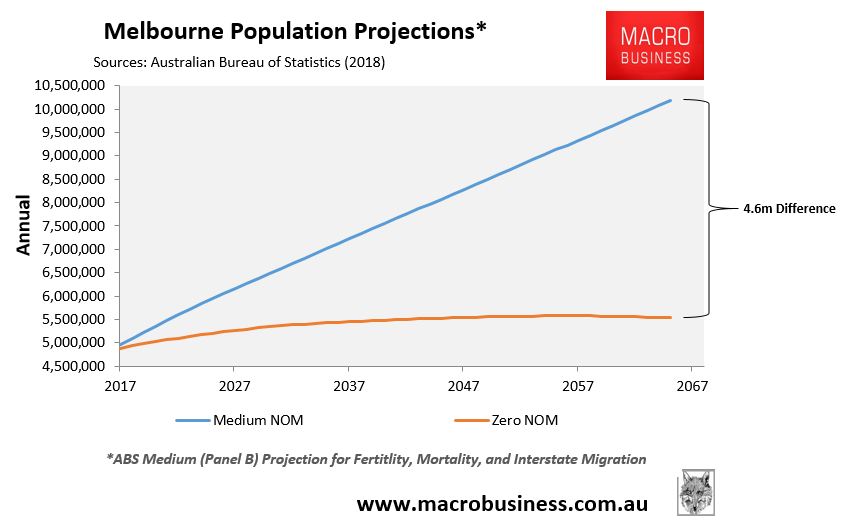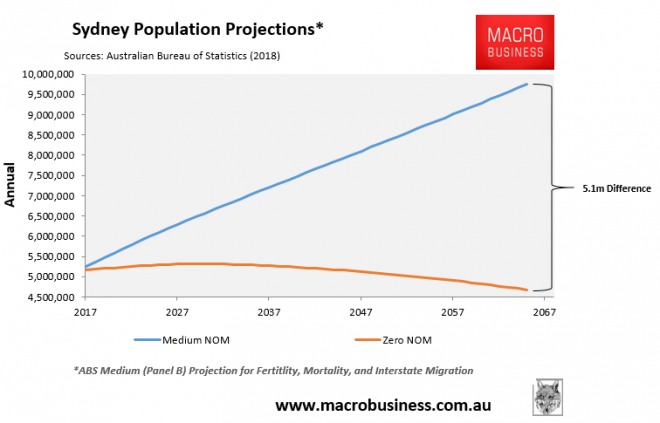Over the past year or so, I have ridiculed the new found push by Coalition politicians towards decentralisation, noting that this is a pipe dream based on the settlement pattern of new migrants, which have overwhelmingly chosen to flood the major cities.
My view was initially based primarily on data from the Productivity Commission’s 2016 Migrant Intake into Australia report, which revealed that 86% of immigrants lived in the major cities of Australia in 2011 (mostly Sydney and Melbourne), whereas only 65% of the Australian-born population did:
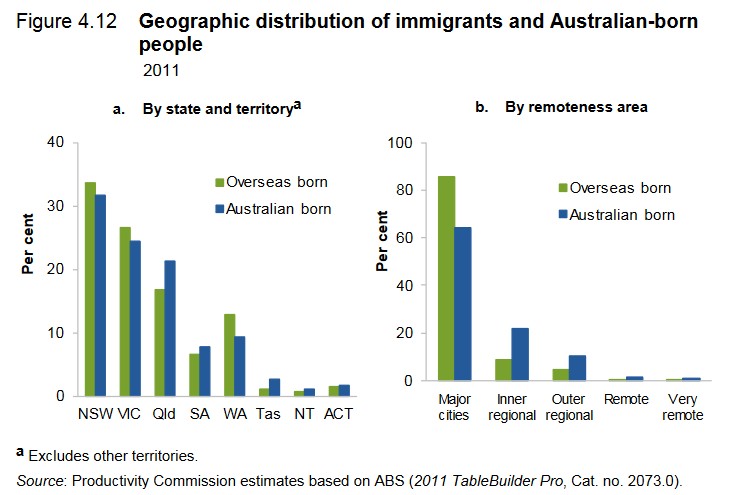
However, it was confirmed by the 2016 Census, which revealed identical results, with 86% of new migrants (1.11 million) in the five years to 2016 settling in Australia’s cities, versus just 14% (187,000) that settled in Australia regional areas over the same period.
As noted by the ABS:
In 2016, Sydney had the highest overseas-born population of all capital cities (1,773,496), followed by Melbourne (1,520,253) and Perth (702,545). The 2016 Census also reveals that those born overseas were more likely to live in a capital city (83%), a much higher percentage than people born in Australia.
On Wednesday, the ABS released population data showing that migrants continued to flood Australia’s capital cities in 2017-18, accounting for 85% of net overseas migration:
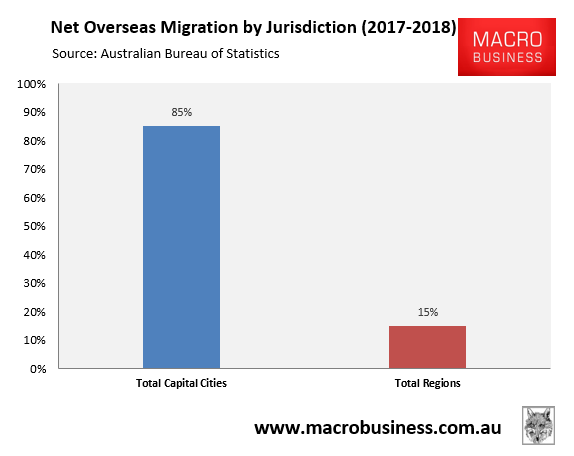
If smaller cities attached to capitals were also included, such as the Gold Coast and Geelong, the figure would obviously be higher.
Regardless, in 2017-18 around 202,000 net overseas migrants landed in the capital cities, versus only 36,000 in Australia’s regions:
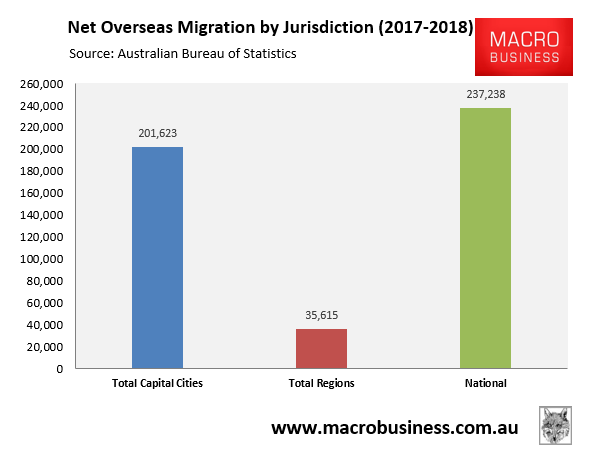
Looking at the break-down, you can see that Sydney and Melbourne alone accounted for around two-thirds of NOM in 2017-18:
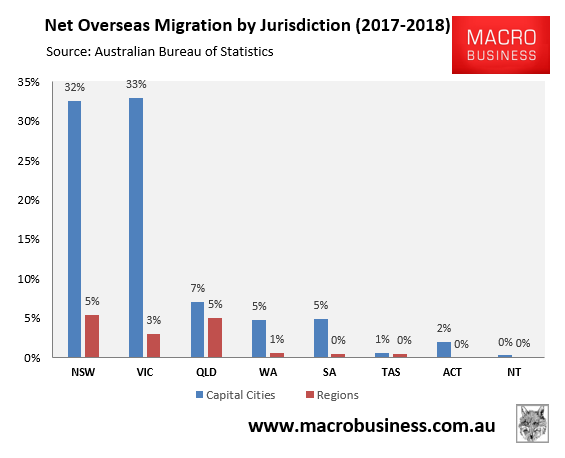
In numbers terms, 155,000 migrants landed in Sydney and Melbourne alone in 2017-18:
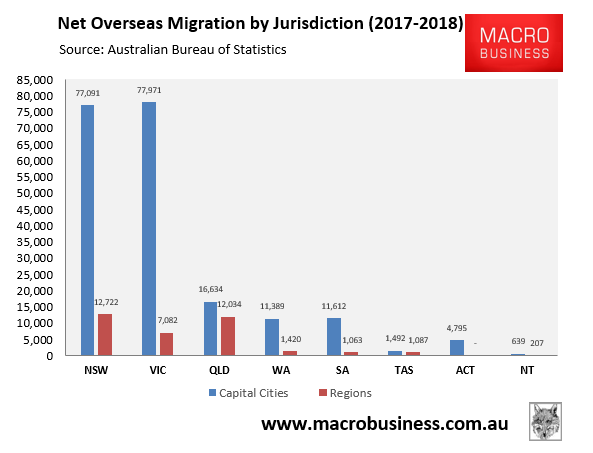
With all three major parties wedded to the policy of mass immigration and a ‘Big Australia’, decentralisation is the only hope of easing the pressures on the big cities.
But how realistic is this goal? Short of erecting ‘migrant proof fences’ and electronic tags, how can decentralisation of migrants be achieved in practice when it has failed so dismally in the past?
The reality is that maintaining mass immigration means that Sydney and Melbourne will continue to be crush-loaded as their populations swell to around 10 million people each by 2066, placing extreme further pressure on infrastructure and housing, and destroying living standards for incumbent residents.
